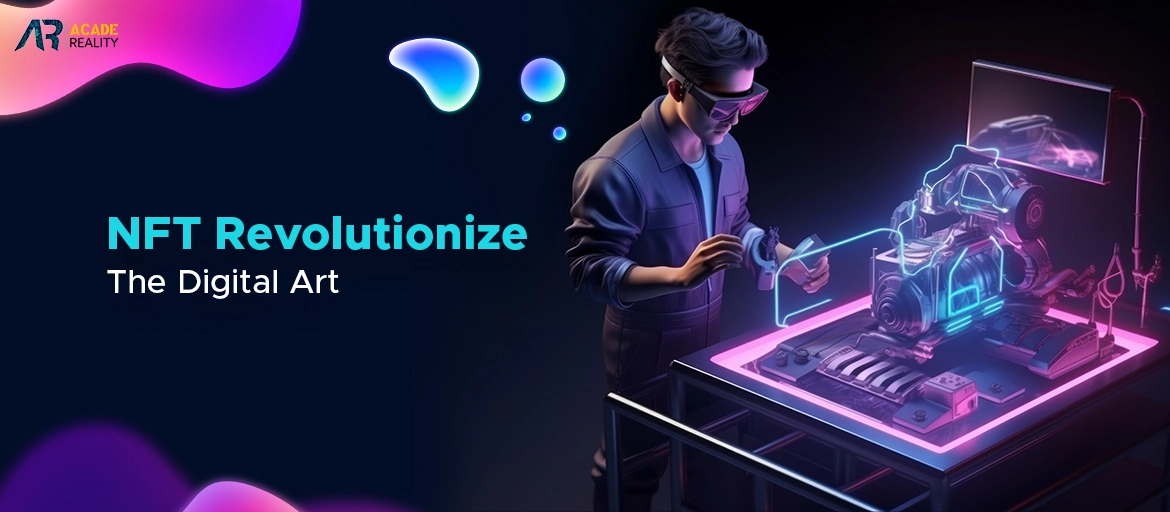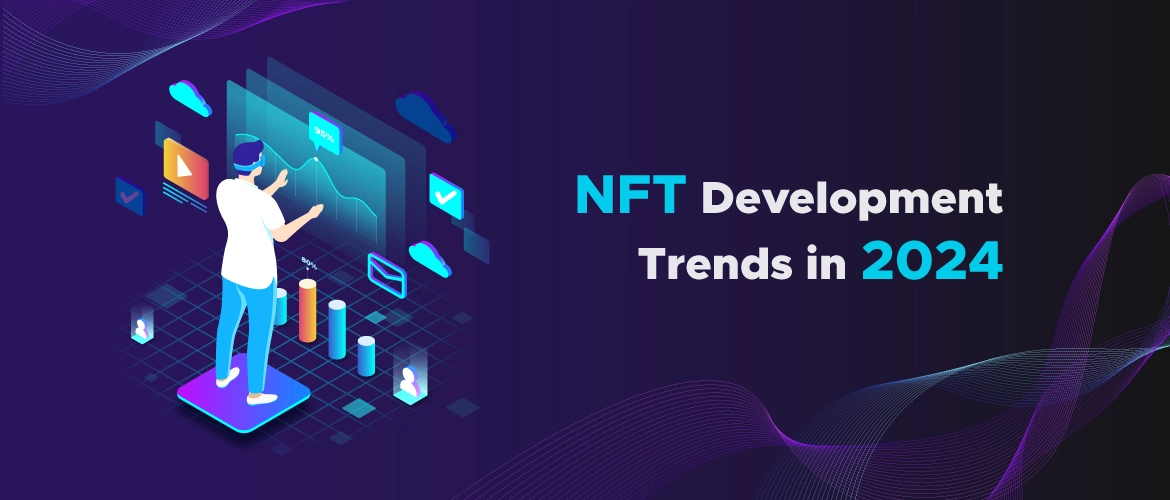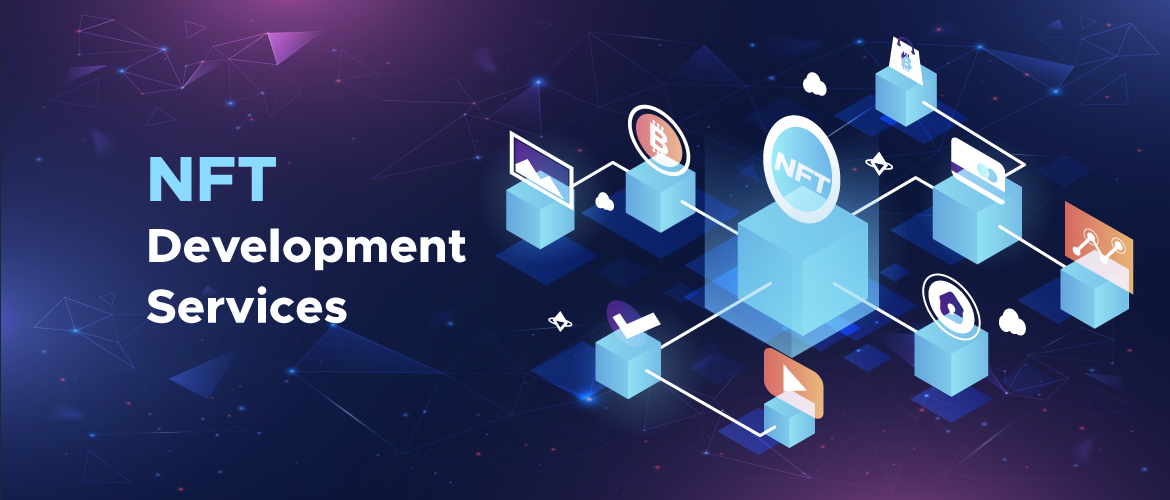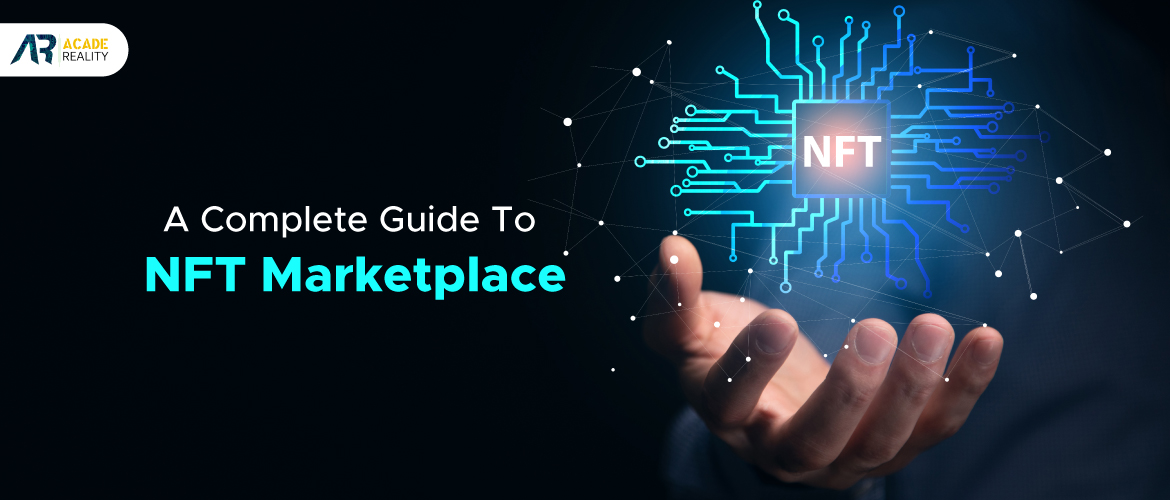NFTs: Revolutionizing Digital Art Ownership in the Digital Age

Within the ecosystem of digital ownership, a paradigm shift is being sparked by the introduction of non-fungible tokens (NFTs). NFTs offer a transparent and safe method for proving the provenance and verifying ownership of distinct digital assets by utilizing blockchain technology. This innovation has promoted the development of a robust marketplace for digital art, collectibles, and previously untradeable items.
NFTs encourage creators to monetize their digital works while giving collectors access to one-of-a-kind, valuable digital assets. This technology has an impact that goes beyond simple transactions and is upending conventional ideas of digital ownership. Notably, NFTs have already disrupted the art world, commanding staggering prices at auction.
In this blog, we look at the emergence of NFTs and their implications for digital ownership. We analyze emerging market trends, legal issues, and the prospects for art and collectibles in the future, illuminating the revolutionary technology's potential for transformation.
What are NFTs and How Do They Work?
NFTs, short for Non-Fungible Tokens, have garnered significant attention in recent times. These digital assets, residing on a blockchain, possess a uniqueness that sets them apart from traditional cryptocurrencies. Each non-fungible token (NFT) has a unique value and is an irreplaceable representation of a variety of tangible or digital goods, including virtual real estate, music, films, and artwork. Smart contracts, which simplify procedures like ownership, transfer, and validation, are necessary for their establishment.
Upon creation, an NFT gets an exclusive digital signature or token identifier, ensuring its authenticity and ownership. This unique trait makes NFTs highly sought after by collectors and enthusiasts alike. Their trading takes place on a variety of online platforms, with buyers and sellers engaging in transactions that are transparently recorded on the blockchain, increasing security and trust.
NFTs and Artistic Expression: A Digital Renaissance?
NFTs (Non-fungible tokens) have transformed artistic expression in the digital age. By using Blockchain technology, NFTs provide a secure and verifiable way to own and trade digital art. This gives creators the freedom to interact directly with collectors and earn a more equitable portion of the sales, bypassing conventional gatekeepers like galleries.
Moreover, NFTs allow the exploration of new kinds of digital art. Interactive experiences, programmable art, and even ownership of virtual spaces within the metaverse become possibilities. NFTs can also help close the gap that exists between digital and real art. Tangible artworks can be linked to NFTs, offering a layer of authenticity and allowing exclusive digital content.
However, challenges and criticisms surround NFTs in artistic expression. Environmental issues concerning the energy consumption of blockchain technology are a major point of discussion. Additionally, the speculated nature of the NFT market and the lack of established copyright regulations raise questions about the long-term value of NFT art.
Despite these difficulties, NFTs present fascinating opportunities for artistic expression. NFT solutions and development services are always changing in an effort to allay these worries and clear the path for a more secure and sustainable future for digital art.
Traditional Art Market vs. NFTs: Exploring New Frontiers in Digital Art Ownership
Owning digital art has never been easy. It typically lacks the clear verification and security of tangible works. A digital file can be copied by anyone, reducing the artwork's worth and making it difficult to verify authenticity. This, combined with the high danger of piracy, limits an artist's reach and revenue.
Enter the Non-Fungible Tokens (NFTs). These serve as digital art ownership certificates and are securely maintained on a blockchain. This resolves the issues facing the conventional market. With NFTs, no doubt owns the original artwork, and copying becomes meaningless. Additionally, NFTs allow artists to connect directly with a global audience, bypassing the limitations of physical exhibits.
While the NFT market is still nascent, with continuous advancements in NFT development services, it holds a significant guarantee for the future of digital art ownership. It's critical to recognize that NFTs and conventional art markets might not be mutually exclusive but rather complementary forces that work together to change the nature of art ownership in the digital era.
The Rise of NFTs in the Art World
The emergence of NFTs has sparked a major revolution in the field of art. These days, artists are redefining the processes of creation, display, and commerce by using this cutting-edge technology. Through tokenizing their own works into NFTs, creators can establish provenance, authenticate their work, and secure ongoing royalties with each subsequent sale. This newfound capability has especially enabled digital artists who had previously grappled with the challenge of monetizing their digital creations due to the ease of replication.
Moreover, NFTs have ushered in a new era for art collectors and enthusiasts. The advent of secure and transparent digital ownership has alleviated concerns surrounding counterfeit or stolen artwork. Consequently, NFT marketplaces have flourished, serving as vibrant hubs for discovering and investing in exclusive and scarce pieces of digital art.
This phenomenon enhances accessibility and fosters a sense of inclusivity within the art world, inviting a broader audience to engage with and appreciate artistic expression in its digital form.
How NFTs Revolutionize Digital Art Ownership
Digital Art Ownership has experienced significant changes with the advent of Blockchain Technology and the rise of Non-Fungible Tokens (NFTs). These cryptographic tokens establish ownership by using the decentralized ledger capabilities of blockchain technology, guaranteeing transparency and security.
Through the use of NFTs, artists and collectors alike benefit from immutable proof of genuineness and provenance. Every transaction is recorded on the blockchain, preventing fraud and ensuring the authenticity of the artwork.
In addition, NFTs allow artists the power to directly sell their creations to a global audience without the need for intermediaries. This direct sales model not only gives artists more control over their work but also allows them to receive royalties on secondary sales, ensuring long-term income for their efforts.
Additionally, NFTs have a chance to broaden access to the art market by lowering barriers to entry for both creators and collectors. Creators from various disciplines can present their work on digital platforms, whereas collectors can invest in art without the traditional gatekeepers of the art world.
In the end, NFTs have transformed digital art ownership by providing a secure, clear, and direct way for creators and buyers to engage with digital art. Through the use of blockchain technology, NFTs offer immutable proof of authenticity while encouraging creators with more authority and financial benefits. Additionally, they create new possibilities for involvement in the art market, creating the foundation for an art world that is more approachable and inclusive.
Conclusion
In conclusion, the rise of Non-Fungible Tokens (NFTs) marks a pivotal moment in the development of digital art ownership. NFTs, which are enabled by blockchain technology, have completely changed how investors and authors certify and commercialize digital creations.
NFTs provide immutable proof of authenticity and ownership, leading to an open and safe system for exchanging digital assets. Through direct sales to a worldwide audience, artists circumvent traditional middlemen, and collectors acquire exclusive and valuable digital works.
Despite challenges such as environmental concerns and regulatory uncertainties, the importance of NFTs in reshaping artistic expression and expanding access to the art market cannot be overstated. Addressing these issues and creating a more inclusive and sustainable ecology are becoming increasingly important as NFT development services change.
In simple terms, NFTs signify a cultural change towards a more egalitarian and accessible art world and a technological advancement. The convergence of traditional art markets and NFTs, which enhance each other, is paving the way for a dynamic future for digital art ownership.
You Might Like



